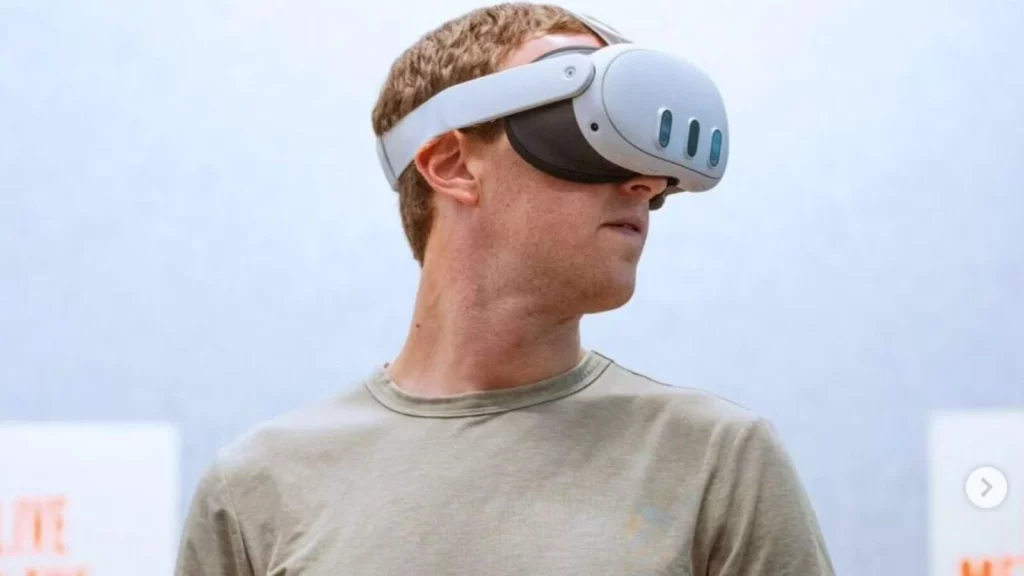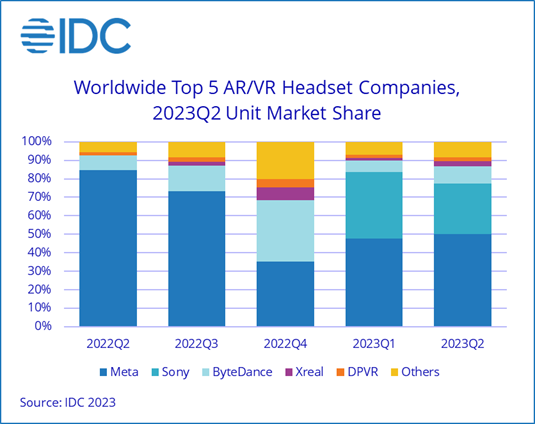In Q2 2023, the AR/VR headset industry experienced its fourth consecutive quarter of decline, with global shipments dropping by a substantial 44.6% compared to the previous year, according to data from the International Data Corporation (IDC).

The Decline in AR/VR Headset Shipments
The report also predicts that total shipments for 2023 will only slightly surpass those of 2017, reaching 8.5 million units, indicating a prolonged period of stagnation in the market. This decline can be attributed primarily to the global economic downturn, which has dampened consumer demand, as well as the increased price of the Meta Quest 2 and a lack of new product launches.

Meta continues to dominate the market with a 50.2% share, followed by Sony and Pico (owned by ByteDance) with 27.1% and 9.6%, respectively, both of which have seen their market share increase since Q2 of the previous year. XReal and DPVR (DaPeng VR) lag behind with marginal market shares just above 2%.
While the industry is currently in a subdued state, the launch of Apple’s Vision Pro AR/VR headset at this year’s Apple WWDC has generated significant excitement and speculation about a potential revival of the Augmented Reality/Virtual Reality headset market, although the sector still falls far short of its previous vibrancy.
In my opinion, the majority of AR/VR software is not yet suitable for everyday use by average consumers. But yes, businesses are increasingly realizing the value of AR/VR headsets for various purposes, including training, simulations, remote assistance, and augmented reality-based maintenance. These applications can boost efficiency, cut costs, and improve employee performance.
The introduction of innovative products like the Vision Pro from Apple offers a glimmer of hope for significant market transformation, possibly paving the way for a breakout in the coming year. However, the balance between new product releases and the right pricing will be crucial in shaping the trajectory of the AR/VR headset industry in the coming years.
RELATED:
- XREAL Air 2 and Air 2 Pro AR Glasses launched in China
- Rokid Station with Rokid Max AR Glasses Review
- ARknovv A1 AR Glasses with creativity, navigation, entertainment launched for 2988 yuan ($417)
- iPhone 15 Pro Max vs Honor Magic5 Ultimate: Specs Comparison
- Best Logitech Gaming Mice 2023 – Lightspeed, Superlight series & more
- Cheapest iPhones to buy in 2023 (India)






